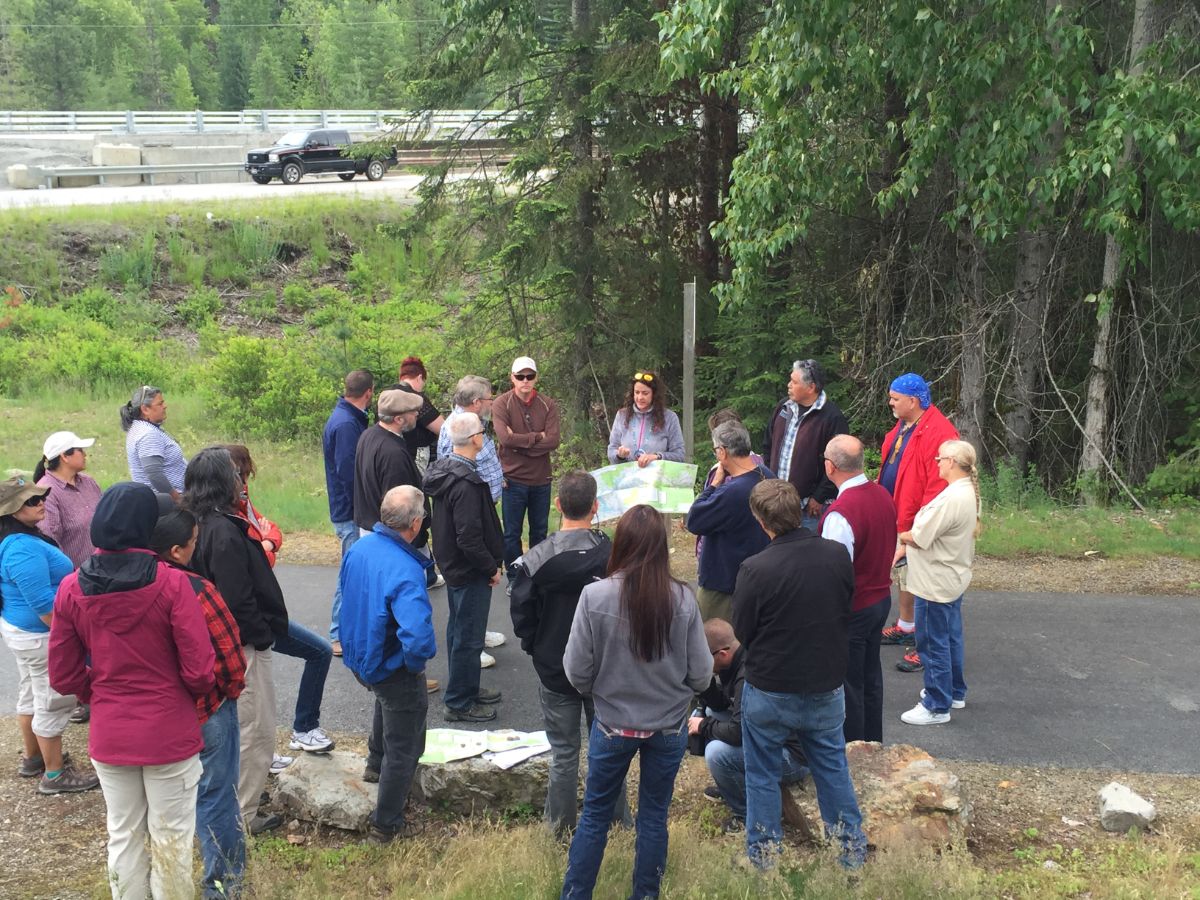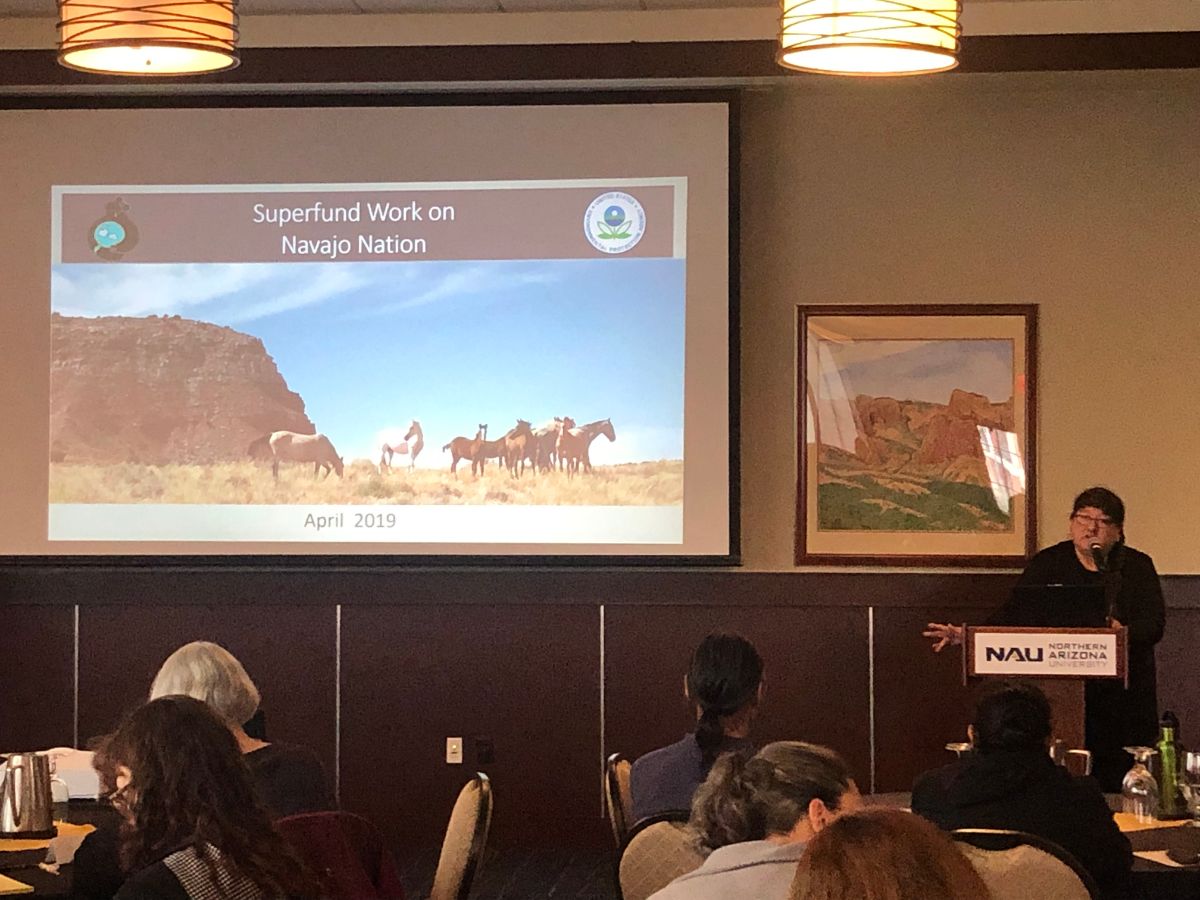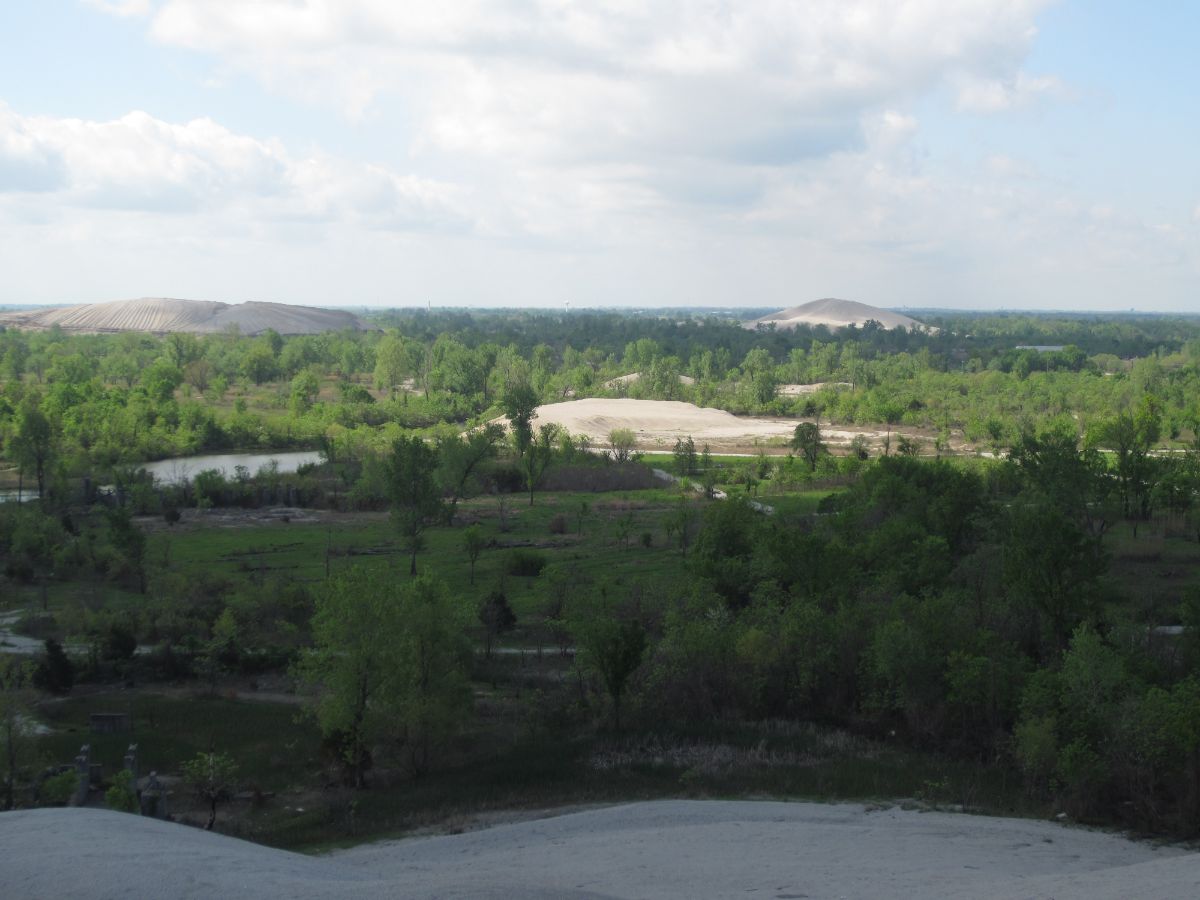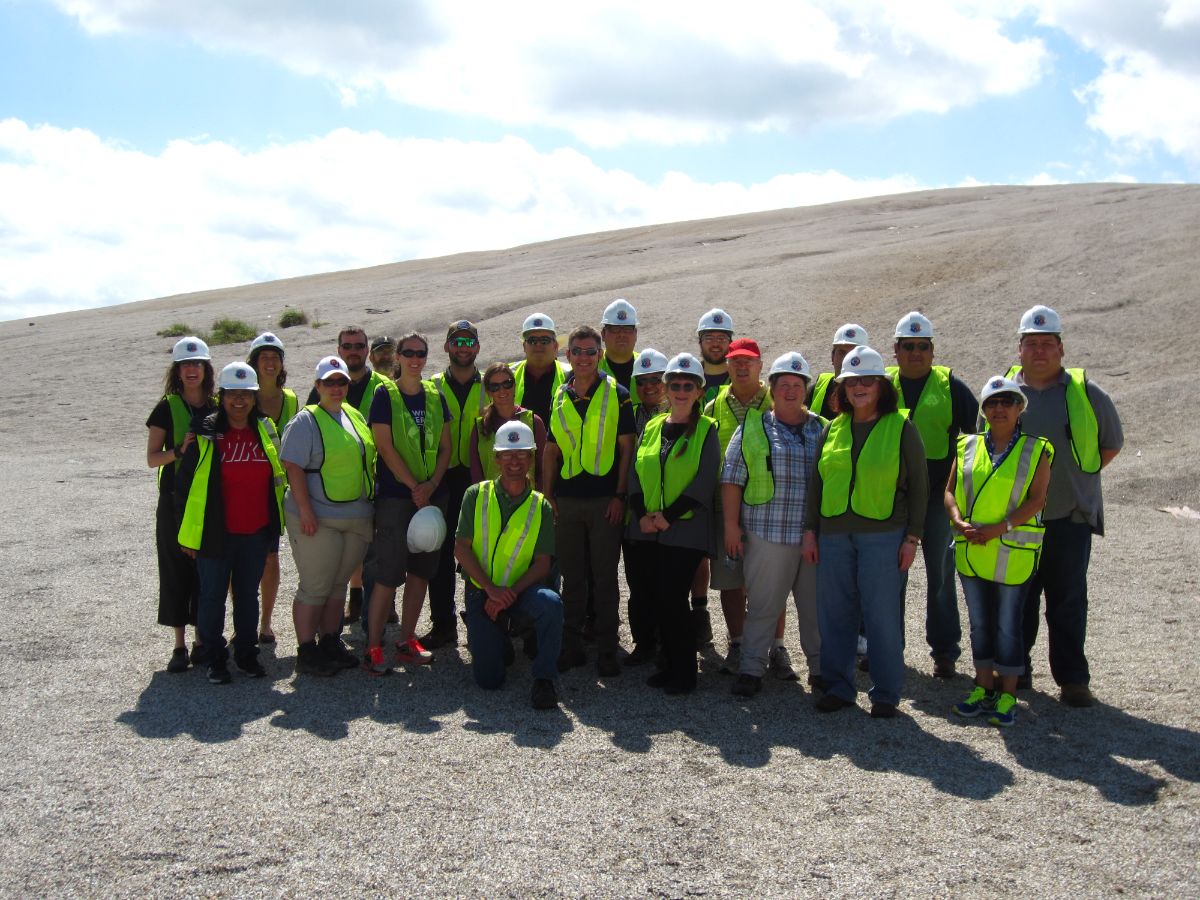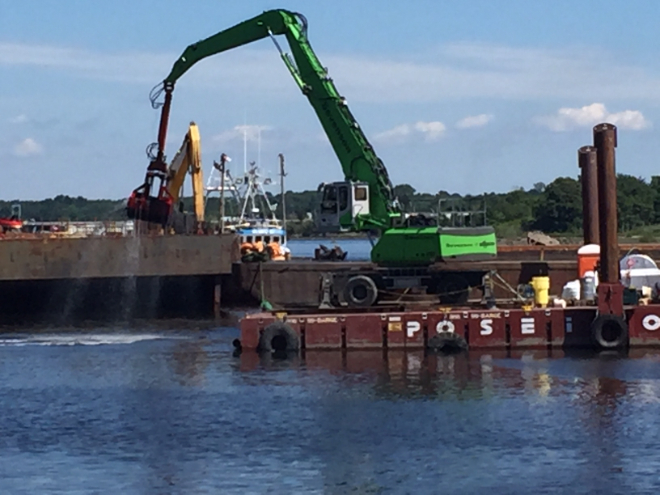
The Tribal Superfund Working Group (TSFWG) participates in one site visit each year where they conduct their annual meeting with other interested Tribal representatives that work on Superfund related issues. Tribes with or affected by Superfund sites throughout the country have volunteered to help host the annual meeting. In addition to site visits and presentations by Tribes and federal agencies, the meetings feature a Talking Circle. These Talking Circles are consistently one of the most highly appreciated aspects of TLAC’s Superfund gatherings, as they give attendees the chance to share, and listen to, their peers in a safe and supportive environment.
Details and documents about past site visits are provided below:
September 19-20, 2023. Washoe Tribe of Nevada and California
This two day meeting and site visit brought the TSFWG to Reno, Nevada, where we met with our friends at the Washoe Tribe, as well as their partners working to address Acid Mine Discharge at the Leviathan Mine Superfund Site. Below you can view the presentations from our meeting on Tuesday, as well as a slide show of the all-day site tour we took on Wednesday.
- A Historical Overview of the Leviathan Site
- A History of the Work Being Done by the California Water Boards to Address Acid Mine Discharge
- A Explanation of the National Priorities List and how the Leviathan site came to be on the NPL
- An Overview of the Remedial Investigation, Feasibility Study, and Remedy Actions Taken Place at the Site
- The Community Involvement Plan Developed for this Site
- Comprehensive Presentation by Cale Pete, Washoe Environmental Manager, on the Tribe’s Involvement with the Site
- Leviathan Mine: Compost-Free Sulfate-Reducing Bioreactor Treatment of Aspen Seep
- Photo Slide Show of the TSFWG site tour
March 29 - April 8, 2021. Virtual Site Visit. Saint Regis Mohawk Tribe
The 2021 TSFWG Annual Meeting (recordings) took place over six days: March 29, 30, 31 and April 6, 7, 8, 2021. This meeting covered a variety of topics including, but not limited to risk communication, building relationships, and blending scientific ecological knowledge and traditional ecological knowledge. Topics included:
- St. Lawrence River Changing Landscapes Since the 20th Century
- Introduction to Contaminated Sediment Sites in the St. Lawrence River Area of Concern at Massena/Akwesasne
- Cooperative Agreements – lessons learned
- Archeological significance and lessons learned on Superfund Sites
- Former General Motors Superfund Site – Landfill, Groundwater Monitoring, and Mohawk uplands
- Air/Water Tribal Standards – Monitoring and Application at Superfund Sites
- Risk Communication and GIS Story Maps from a Tribal Perspective
- Building Relationships through Time for the Grasse River Superfund Site
- NRDA -Mohawk Community Cultural Revitalization
- Blending Scientific Ecological Knowledge and Traditional Ecological Knowledge for Grasse River re-plantings
- Tribal Superfund Working Group Talking Circle
October 8-10, 2019. Little Traverse bay Band of Odawa Indians
This three day training was the second Tribal Superfund Site Visit offered in 2019 and included two days of site visits, allowing us to visit four different sites. This training took place in Michigan in cooperation with the Little Traverse Bay Band of Odawa Indians. These are very unique and interesting sites, (such as a decommissioned nuclear reactor and an industrial site converted to housing), and included discussions about groundwater protection, cultural and habitat preservation, and redevelopment challenges. Other topics included: an overview of the Little Traverse Bay Bands of Odawa Indians given by the Cultural Department, an overview of Superfund and Brownfields Projects conducted by Little Traverse Bay Bands of Odawa Indians, a Tribal case study of plumes and vapor Intrusion, and a TSFWG Roundtable.
April 2-4, 2019. Cameron Area, Navajo Nation
This three day training included two days in the classroom and a full day field trip. The classroom training included a variety of topics related to the contamination on the Navajo Nation including: An overview of how the CERCLA Process has been applied on the Navajo Nation, Diné Fundamental Law and TEK, Utilizing Geospatial Technology at Navajo Superfund Program (NSP), How NSP Conducts Outreach on Abandoned Uranium Mine (AUM) Projects, Community Impacts/Engagement in the Cameron area (given by the Cameron Chapter Secretary), Upcoming Disposal Options for AUM’s on the Navajo Nation, Removal Site Evaluation on Boyd Tsi: Technical Presentation on Remediation, and a TSFWG Roundtable. This training also included an all day site visit to the Cameron area of the Navajo Nation.
August 13, 2018. Bunker Hill Mining and Metallurgical Superfund Site
This full day field trip was scheduled for Monday during the Tribal Lands and Environment Forum. The Bunker Hill site was first added to the NPL in 1983. The Site includes mining-contaminated areas in the Coeur d’Alene River corridor, adjacent floodplains, downstream water bodies, tributaries, and fill areas, as well as the 21-square-mile Bunker Hill “Box” where historical ore-processing and smelting operations occurred. The tour encompassed many stops including: Canyon Creek, Hercules Mine and Mill Site, Big Creek Repository and Sunshine Mine, the Central Treatment Plant, the Central Impound Area, the Trail of the Coeur d’Alenes (Rails to Trails).
April 24-26, 2018. Jackpile-Paguate Mine Superfund
This three day training included two days in the classroom and a full day field trip. The classroom training included topics such as: approaches to risk assessment, Natural Resource Damage Assessment Restoration, and how different tools and models can be tailored to your community and situation. This training featured a variety of presentations, and discussion focused on the involvement process. Multiple presenters discussed the government to government consultation process, developing MOUs, building bridges and working effectively with research institutions, educating and fully engaging community members about potential hazards and what they can do to help protect their communities and the environment. Tribal staff also put together a great itinerary for the all-day site visit at the Jackpile-Paguate Mine Superfund.
April 18-20, 2017. Tar Creek
This three day training included two days in the classroom and a full day field trip. The classroom training included topics such as: how to develop and use Tribal cleanup standards, building Tribal capacity to conduct cleanup activities, addressing land use issues, future activities at Tar Creek, a question and answer session with staff from the Quapaw Tribe, a presentation from Cherokee Nation, and a roundtable discussion with other members of the Tribal Superfund Working Group. Tribal staff also put together a great itinerary for the all-day site visit which included remedial and restoration projects and sites of concern.
August 15, 2016. New Bedford Harbor
This full day field trip was scheduled for Monday during the Tribal Lands and Environment Forum. The 18,000-acre New Bedford site is an urban tidal estuary with sediments which are highly contaminated with polychlorinated biphenyls (PCBs) and heavy metals. At least two manufacturers in the area used PCBs while producing electric devices from 1940 to the late 1970s, when the manufacture of PCBs was banned by the EPA. These facilities discharged industrial wastes containing PCBs directly into the harbor and indirectly through the city sewer system. As a result, the harbor is contaminated in varying degrees for at least 6 miles from the upper Acushnet River into Buzzards Bay. Over 100,000 people live within 3 miles of the site. To learn more, download the New Bedford Harbor Superfund Site Community Involvement Plan and Institutional Control Plan for Seafood Consumption 2015.
May 24-26, 2016. Bunker Hill Mining and Metallurgical Superfund Site
This special opportunity included a day and a half of classroom training in Spokane, Washington as well as a full day site visit to the Bunker Hill Superfund site, led by USEPA and staff from the Coeur d’Alene Tribe. The Bunker Hill site was first added to the NPL in 1983. The Site includes mining-contaminated areas in the Coeur d’Alene River corridor, adjacent floodplains, downstream water bodies, tributaries, and fill areas, as well as the 21-square-mile Bunker Hill “Box” where historical ore-processing and smelting operations occurred. The tour encompassed many stops including: remediation of East Fork Ninemile Creek, the Central Treatment Plant, the Trail of the Coeur d’Alenes (Rails to Trails), the Cataldo Boat Launch, and Schlepp Agricultural to Wetland conversion project.
2016 Shoshone News-Press: Remember the giants, 20 years later
August 2015. Reilly Tar & Chemical Corporation Site (St. Louis Park Plant), Minneapolis, MN
This half day field trip took place on August 20, 2015. For many years this site was used for coal tar distillation and wood preservation, which led to contamination of multiple aquifers. This tour included a visit to two large groundwater treatment plants and reclaimed land that now has a community park, soccer fields, and both residential and commercial buildings. The Public Works Superintendent and a field technician discussed the process the City of St. Louis Park went through to tackle regulatory hurdles, the steps they took to remediate the site, and the struggles and successes of the overall project.
Reilly Tar and Chemical Corporation OverviewSuperfund Site Visits Gallery
Scroll through the gallery below to see some of the photos from past site visits!
For more information please contact:
Todd Barnell, Project Director
928-523-3840
Todd.Barnell@nau.edu
Julie Meikowski, Assistant Manager
928-523-9404
Julie.Meikowski@nau.edu


